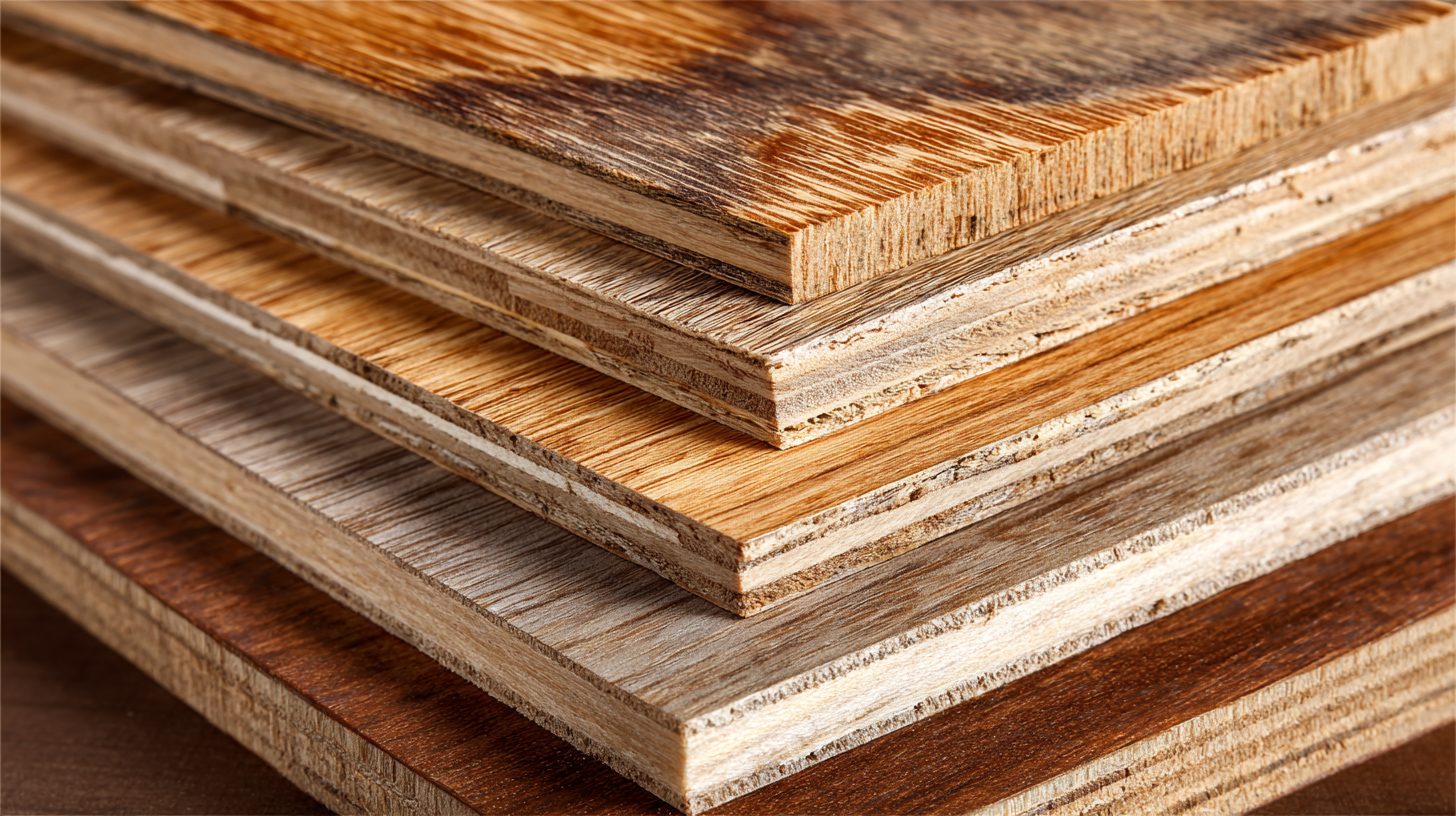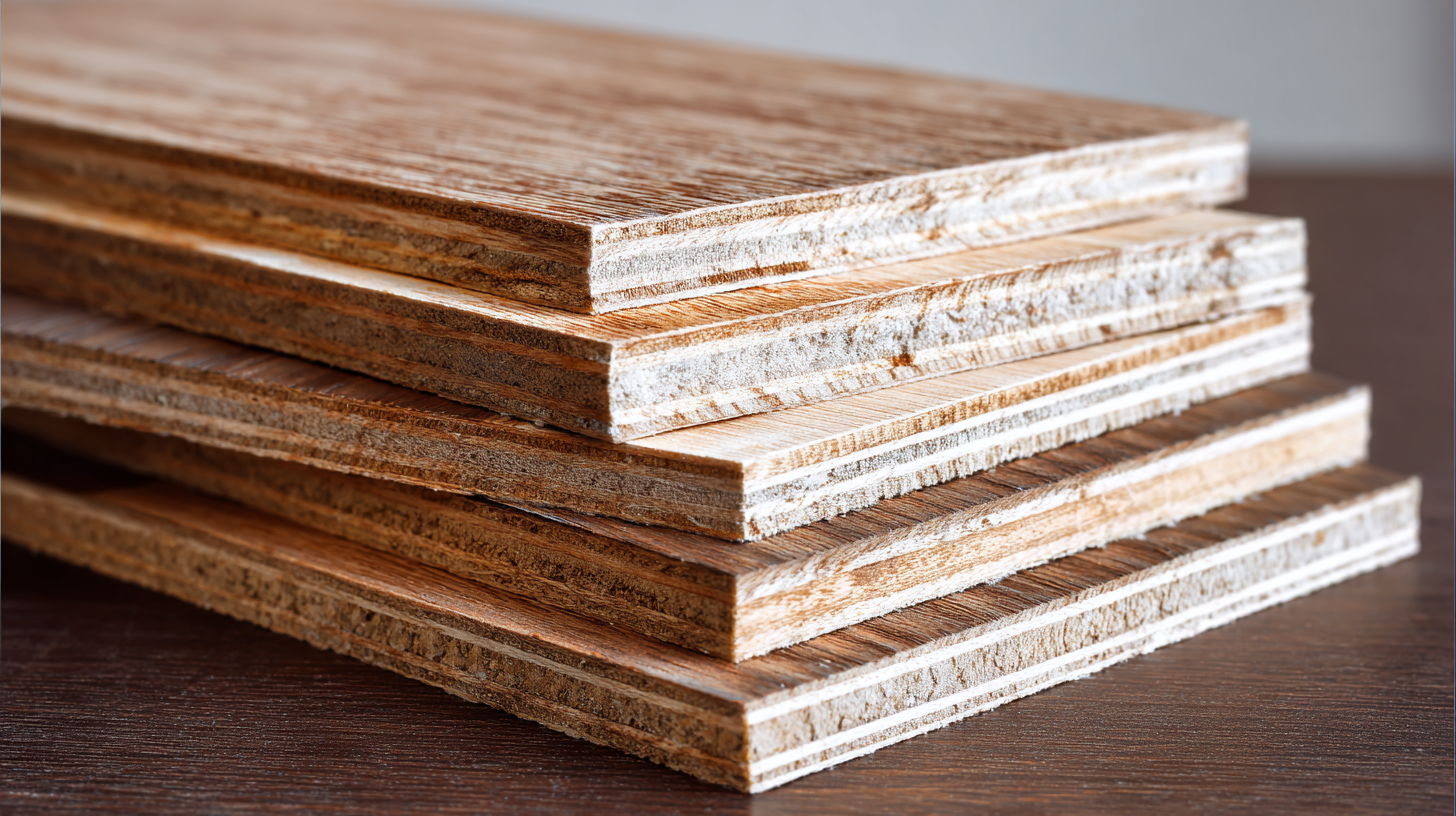In the rapidly evolving plywood industry, the year 2025 is poised to witness significant trends influenced by both technological advancements and market dynamics. As highlighted in the Global Wood Panel Market Report, the plywood segment is expected to grow at a CAGR of 5.8% from 2021 to 2026, with emerging economies such as China driving substantial demand due to urbanization and increased infrastructure spending. China Plywood, recognized for its diverse range of products and competitive pricing, stands at the forefront of this growth, effectively competing against global counterparts. This blog will delve into the detailed technical parameters of Chinese plywood products and provide insights on how to leverage these advantages to maintain competitiveness in the international market. By understanding these trends and technological specifications, stakeholders can better navigate the complexities of the global plywood landscape.

The plywood market is projected to experience substantial growth, with an anticipated compound annual growth rate (CAGR) of 6% leading up to 2025. This growth can be attributed to increasing demands across various sectors such as construction, furniture, and packaging. As urbanization accelerates globally, the construction industry is set to leverage plywood for its structural benefits, lightweight properties, and versatility, making it a preferred choice for modern building projects.
China's position in the plywood market is increasingly significant, as it stands as a major producer and exporter. The country's advanced manufacturing capabilities, combined with its access to vast raw materials, allow it to maintain competitive pricing and high-quality product outputs. Additionally, Chinese manufacturers are investing in technology and sustainable practices, which not only enhance production efficiency but also cater to the rising demand for eco-friendly options. As global competitors strive to establish their market presence, China's adaptability and innovation will likely play a crucial role in maintaining its leadership in the plywood industry by 2025.
| Region | Estimated Market Share (%) | CAGR (2020-2025) | Key Driver Factors |
|---|---|---|---|
| Asia-Pacific | 45% | 6.2% | Infrastructure Development |
| North America | 25% | 5.5% | Housing Market Recovery |
| Europe | 20% | 4.8% | Sustainability Initiatives |
| Latin America | 7% | 5.0% | Urbanization Trends |
| Middle East & Africa | 3% | 4.2% | Construction Boom |
The plywood industry is witnessing a shift towards sustainable practices and technological advancements, with China leading the way. Innovations in production techniques are essential in ensuring not only quality but also eco-friendliness. For instance, manufacturers are increasingly adopting environmentally responsible sourcing of raw materials. This includes utilizing certified timber and implementing processes that minimize waste. These practices not only comply with global regulations but also resonate well with environmentally conscious consumers.
Moreover, technology plays a crucial role in enhancing production efficiency. Techniques such as automated machinery and digital monitoring systems are transforming traditional methods, allowing for greater precision and reduced labor costs. Advanced technologies, like 3D modeling and artificial intelligence, enable manufacturers to optimize their designs and reduce material usage. This convergence of sustainability and technology positions Chinese plywood manufacturers as formidable competitors on the global stage, as they lead in producing high-quality, eco-friendly products that meet the rising demand for sustainable construction materials.
As global trade dynamics shift, the plywood industry is experiencing remarkable transformations, particularly regarding China's export volume. A recent examination highlights that China’s plywood exports have surpassed 30 million cubic meters, which positions the country as a dominant force in the global market. This surge is attributed to China's efficient production processes, competitive pricing, and the ability to rapidly respond to international demands.
In contrast, countries like Romania are also expanding their wood product exports, with over half of their timber being sent outside the EU, reaching markets as far as Japan. This illustrates a broader trend where emerging markets are increasingly competing with established players. To thrive in this competitive landscape, companies need to focus on sustainable practices and innovation, ensuring that their products meet both quality standards and environmental regulations.
Tips for success in the plywood industry include investing in technology to improve production efficiency, engaging in sustainable forestry practices to appeal to eco-conscious consumers, and exploring diverse global markets beyond traditional trade partners. By adopting these strategies, businesses can enhance their competitiveness and resilience against global challenges.
The global plywood market is facing a myriad of challenges that shape its dynamics and competitiveness. One of the most pressing issues is the imposition of tariffs, which has caused considerable disruption in international trade. According to a report by the United Nations Economic Commission for Europe, tariffs on imported plywood have increased by an average of 10% in recent years, making it more expensive for countries to source wood products from global suppliers. This shift is pushing manufacturers in regions like North America and Europe to seek alternatives, significantly impacting their sourcing strategies.
 Additionally, stringent regulations surrounding sustainable forestry practices and environmental standards are forcing plywood producers to adapt or face penalties. The Forest Stewardship Council (FSC) reports that over 80% of consumers now prefer sustainably sourced plywood, reflecting a growing trend toward eco-friendly products. Compliance with these regulations not only increases production costs but also requires significant investment in sustainable practices, which can be a hurdle for smaller producers. Thus, as manufacturers adjust to these changes, the competitive landscape is reshaped with those who prioritize sustainability positioned to capture a growing market segment.
Additionally, stringent regulations surrounding sustainable forestry practices and environmental standards are forcing plywood producers to adapt or face penalties. The Forest Stewardship Council (FSC) reports that over 80% of consumers now prefer sustainably sourced plywood, reflecting a growing trend toward eco-friendly products. Compliance with these regulations not only increases production costs but also requires significant investment in sustainable practices, which can be a hurdle for smaller producers. Thus, as manufacturers adjust to these changes, the competitive landscape is reshaped with those who prioritize sustainability positioned to capture a growing market segment.
As consumer preferences increasingly shift towards eco-friendly materials, the plywood industry is experiencing a transformation, with a growing emphasis on sustainable products. The global plywood market, valued at approximately USD 59.01 billion in 2024, is projected to reach between USD 62.67 billion in 2025 and USD 104.53 billion by 2033, showcasing a promising growth trajectory. With consumers prioritizing environmentally responsible options, manufacturers are adapting by incorporating sustainable practices and materials into their offerings.

Moreover, the demand for decorative and eco-friendly wood finishes is driving significant expansion in the veneer sheets market. This segment is being fueled by rising consumer awareness regarding sustainability and environmental regulations. As the wood recycling market is anticipated to reach $30 billion by 2032, it’s clear that the push for recycled products is becoming a vital component of industry growth.
Tip: For businesses looking to thrive in this evolving market, focusing on sourcing sustainable materials and offering recycled options can meet consumer demand while improving brand reputation. Additionally, aligning product lines with eco-friendly trends will not only enhance competitiveness but also drive long-term customer loyalty.
